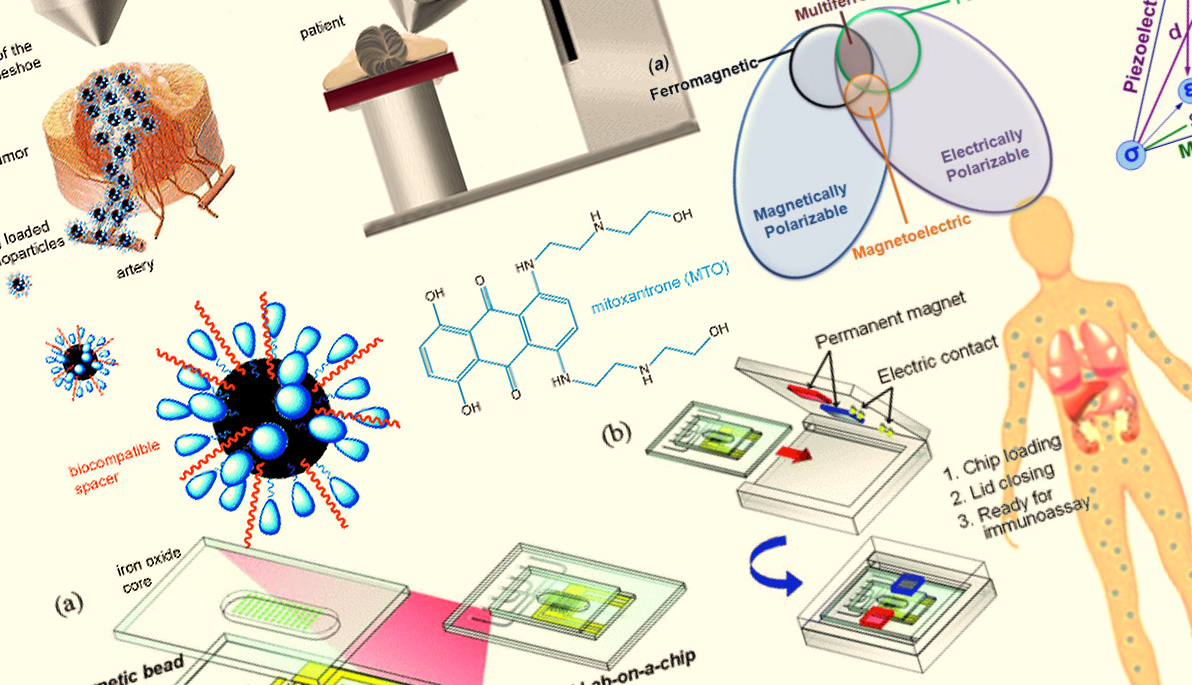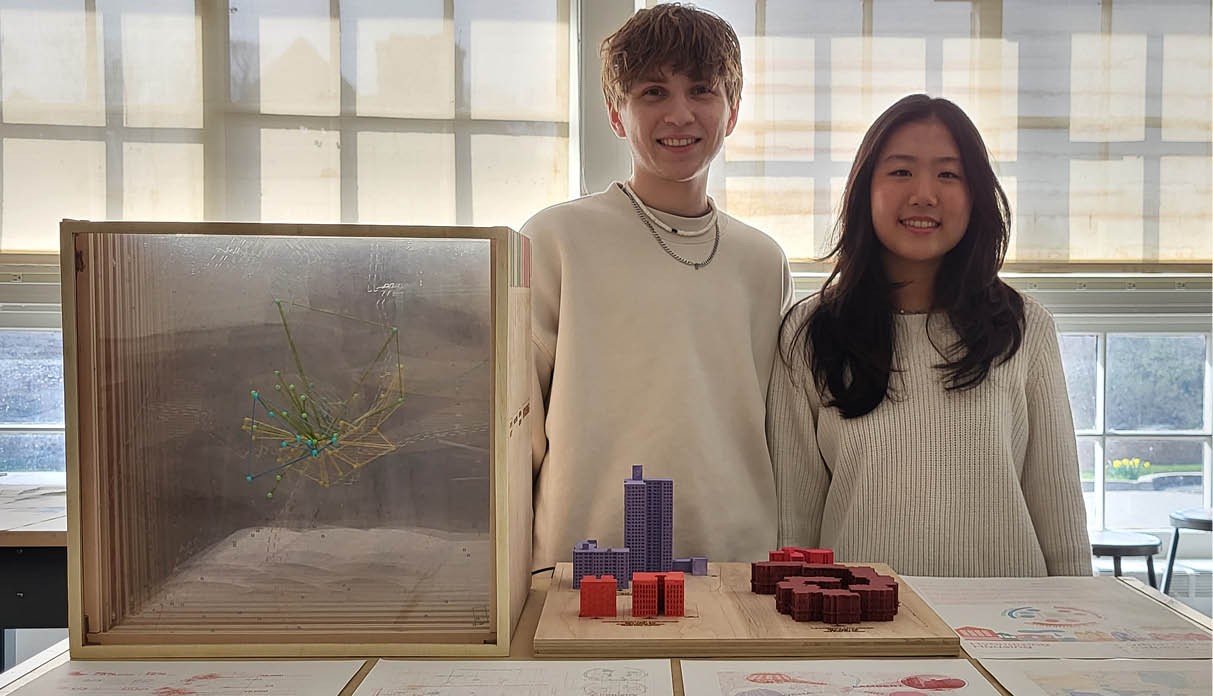News
Fighting Cancer with Magnets—on the Nano Scale
July 9, 2018
Pictured: A collage of illustrations highlighting Assistant Professor Dorinamaria Carka’s research. The images feature sketches of bio-functionalized magnetic nanoparticles to be driven either in lab-on-chip or implantable devices for localized and targeted treatment.
One of the biggest problems with conventional cancer treatments like chemotherapy is that, while they kill cancerous cells, they also damage healthy cells. Targeted drug delivery helps solve that problem. By using therapeutic agents encapsulated in magnetic micro- and nanoparticles, doctors can focus treatments on specific sites in the body, driving them to their destination using an external magnetic field.

Dorinamaria Carka, Ph.D.
NYIT School of Engineering and Computing Sciences Assistant Professor Dorinamaria Carka, Ph.D., is experimenting with the ferromagnetic materials (i.e., materials highly susceptible to magnetization) of nanostructures to determine whether changing their shape enables them to find and hit their target in a more controlled and efficient manner.
Carka’s basic science research focuses on the computational modeling and fracture mechanics of ductile and ferroelectric materials. By modeling coupled multiphysics phenomena occurring in materials that combine electric and magnetic properties, she can improve the way advanced nanoscale systems and devices, such as those used for targeted drug delivery, are understood and designed.
“In order to take advantage of the micro structure of those materials, we have to zoom in on the nano scale because that’s where the interesting phenomena are happening,” she explains. “With ferromagnetic materials, for example, by changing the dimension of your nano structure, you can actually control how the magnetization factor or how the magnetization spin is aligned in the structure.”
To optimize the control of the magnet, Carka uses computer simulation to test specific combinations of materials, sizes, and structures. Over the past year, she’s been assisted by undergraduate engineering major Ian Kelly, who uses her results to build software models. Carka’s approach is unique in that she is applying voltage rather than current to move the magnetic domain, which eliminates wires and reduces the size of the device.
“It is a different way to control magnetization,” Carka says. “Basically, I control the voltage on the piezoelectric that is glued to the ferromagnetic, and with this cross-field control of magnetization, I can control the magnetization. The voltage is the revolutionary part. I don’t need wires to do that.”
One possible application for the resulting high energy-efficiency device would be an implantable device to target a tumor. “You can use this concept to drive magnetic particles in a controlled way with low-energy loss,” says Carka. “It’s a very precise and fast way to create a rupture around a tumor—or destroy it.”
This story originally appeared as part of the feature “Bio + Tech = a Healthier Future” in the Summer 2018 issue of NYIT Magazine.
By Renée Gearhart Levy




